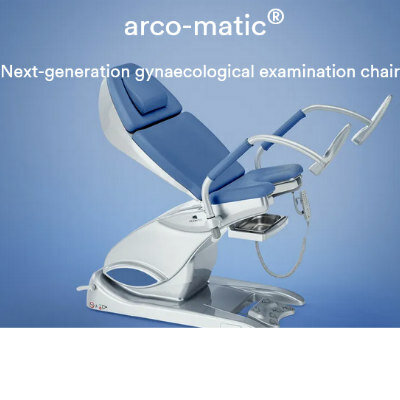“Black Box” Recorder Monitors Operating Rooms 
|
By HospiMedica International staff writers Posted on 29 Jul 2014 |

Image: The PESA Xstream “Black box” for operating rooms (Photo courtesy of PESA).
A “black box,” similar to that used in the airline industry, could improve patient safety and outcomes by identifying where errors occur in the operating room (OR) and teaching surgeons how to prevent them.
Developed at St. Michael’s Hospital (Toronto, ON, Canada), in collaboration with Air Canada (Montreal, Canada) the “black box” records almost everything that is happening in the OR, such as vital signs, a video of the OR, a video feed from the endoscope used in the surgical procedure, conversations among health care workers, room temperature, and decibel levels. Based on the PESA (Huntsville, AL, USA) X-stream multipath streaming media recorder, the technology is currently being used for minimally invasive surgery (MIS), but could be expanded for open surgeries as well.
Patients must give their consent before the black box is used during their surgery, as do members of the surgical team, including theater nurses. In a preliminary review of the data recorded on the device, the researchers have found that 84% of errors during gastric bypass MIS procedures occurred during the same two stages - suturing and grafting the bowel. The device has been in use at St. Michael’s since April 2014, and is also being tested at two hospitals in Copenhagen (Denmark), with more international sites to be involved soon.
“We want to see where errors happen in surgery so that we can understand how errors lead to adverse events and develop training curricula to prevent these errors from ever happening again,” said device developer surgeon Teodor Grantcharov, MD. “It doesn’t mean that we will have perfect surgeries, because we are not perfect. But it means we will learn from our errors, which will make us safer. We will train future surgeons better because we can show them what the most critical situations are and how to avoid them.”
“For surgeons, we will have data that will allow better coaching and improvements, and therefore better patient care. We will reduce the risk and complications and show how to make the OR more efficient, which will also allow us to save money and do more cases,” added Dr. Grantcharov. He also added that he hoped his black box would bring more transparency to the OR for patients, and help change the “blame-and-shame” culture that traditionally has made doctors and nurses reluctant to report mistakes.
Related Links:
St. Michael’s Hospital
Air Canada
PESA
Developed at St. Michael’s Hospital (Toronto, ON, Canada), in collaboration with Air Canada (Montreal, Canada) the “black box” records almost everything that is happening in the OR, such as vital signs, a video of the OR, a video feed from the endoscope used in the surgical procedure, conversations among health care workers, room temperature, and decibel levels. Based on the PESA (Huntsville, AL, USA) X-stream multipath streaming media recorder, the technology is currently being used for minimally invasive surgery (MIS), but could be expanded for open surgeries as well.
Patients must give their consent before the black box is used during their surgery, as do members of the surgical team, including theater nurses. In a preliminary review of the data recorded on the device, the researchers have found that 84% of errors during gastric bypass MIS procedures occurred during the same two stages - suturing and grafting the bowel. The device has been in use at St. Michael’s since April 2014, and is also being tested at two hospitals in Copenhagen (Denmark), with more international sites to be involved soon.
“We want to see where errors happen in surgery so that we can understand how errors lead to adverse events and develop training curricula to prevent these errors from ever happening again,” said device developer surgeon Teodor Grantcharov, MD. “It doesn’t mean that we will have perfect surgeries, because we are not perfect. But it means we will learn from our errors, which will make us safer. We will train future surgeons better because we can show them what the most critical situations are and how to avoid them.”
“For surgeons, we will have data that will allow better coaching and improvements, and therefore better patient care. We will reduce the risk and complications and show how to make the OR more efficient, which will also allow us to save money and do more cases,” added Dr. Grantcharov. He also added that he hoped his black box would bring more transparency to the OR for patients, and help change the “blame-and-shame” culture that traditionally has made doctors and nurses reluctant to report mistakes.
Related Links:
St. Michael’s Hospital
Air Canada
PESA
Latest Health IT News
- Machine Learning Model Improves Mortality Risk Prediction for Cardiac Surgery Patients
- Strategic Collaboration to Develop and Integrate Generative AI into Healthcare
- AI-Enabled Operating Rooms Solution Helps Hospitals Maximize Utilization and Unlock Capacity
- AI Predicts Pancreatic Cancer Three Years before Diagnosis from Patients’ Medical Records
- First Fully Autonomous Generative AI Personalized Medical Authorizations System Reduces Care Delay
- Electronic Health Records May Be Key to Improving Patient Care, Study Finds
- AI Trained for Specific Vocal Biomarkers Could Accurately Predict Coronary Artery Disease
- First-Ever AI Test for Early Diagnosis of Alzheimer’s to Be Expanded to Diagnosis of Parkinson’s Disease
- New Self-Learning AI-Based Algorithm Reads Electrocardiograms to Spot Unseen Signs of Heart Failure
- Autonomous Robot Performs COVID-19 Nasal Swab Tests

- Statistical Tool Predicts COVID-19 Peaks Worldwide
- Wireless-Controlled Soft Neural Implant Stimulates Brain Cells
- Tiny Polymer Stent Could Treat Pediatric Urethral Strictures
- Human Torso Simulator Helps Design Brace Innovations
- 3D Bioprinting Rebuilds the Human Heart
- Nanodrone Detects Toxic Gases in Hazardous Environments
Channels
Artificial Intelligence
view channel
AI-Powered Algorithm to Revolutionize Detection of Atrial Fibrillation
Atrial fibrillation (AFib), a condition characterized by an irregular and often rapid heart rate, is linked to increased risks of stroke and heart failure. This is because the irregular heartbeat in AFib... Read more
AI Diagnostic Tool Accurately Detects Valvular Disorders Often Missed by Doctors
Doctors generally use stethoscopes to listen for the characteristic lub-dub sounds made by heart valves opening and closing. They also listen for less prominent sounds that indicate problems with these valves.... Read moreCritical Care
view channel
Deep-Learning Model Predicts Arrhythmia 30 Minutes before Onset
Atrial fibrillation, the most common type of cardiac arrhythmia worldwide, affected approximately 59 million people in 2019. Characterized by an irregular and often rapid heart rate, atrial fibrillation... Read more
Breakthrough Technology Combines Detection and Treatment of Nerve-Related Disorders in Single Procedure
The peripheral nervous system (PNS) serves as the communication network that links the brain and spinal cord to every other part of the body. It consists of two parts: the somatic nervous system, which... Read moreSurgical Techniques
view channel
Hydrogel-Based Miniaturized Electric Generators to Power Biomedical Devices
The development of engineered devices that can harvest and convert the mechanical motion of the human body into electricity is essential for powering bioelectronic devices. This mechanoelectrical energy... Read moreWearable Technology Monitors and Analyzes Surgeons' Posture during Long Surgical Procedures
The physical strain associated with the static postures maintained by neurosurgeons during long operations can lead to fatigue and musculoskeletal problems. An objective assessment of surgical ergonomics... Read more.jpg)
Custom 3D-Printed Orthopedic Implants Transform Joint Replacement Surgery
The evolving field of 3D printing is revolutionizing orthopedics, especially for individuals requiring joint replacement surgeries where traditional implants fail to provide a solution. Although most people... Read more
Cutting-Edge Imaging Platform Detects Residual Breast Cancer Missed During Lumpectomy Surgery
Breast cancer is becoming increasingly common, with statistics indicating that 1 in 8 women will develop the disease in their lifetime. Lumpectomy remains the predominant surgical intervention for treating... Read morePatient Care
view channel
Surgical Capacity Optimization Solution Helps Hospitals Boost OR Utilization
An innovative solution has the capability to transform surgical capacity utilization by targeting the root cause of surgical block time inefficiencies. Fujitsu Limited’s (Tokyo, Japan) Surgical Capacity... Read more
Game-Changing Innovation in Surgical Instrument Sterilization Significantly Improves OR Throughput
A groundbreaking innovation enables hospitals to significantly improve instrument processing time and throughput in operating rooms (ORs) and sterile processing departments. Turbett Surgical, Inc.... Read more
Next Gen ICU Bed to Help Address Complex Critical Care Needs
As the critical care environment becomes increasingly demanding and complex due to evolving hospital needs, there is a pressing requirement for innovations that can facilitate patient recovery.... Read moreGroundbreaking AI-Powered UV-C Disinfection Technology Redefines Infection Control Landscape
Healthcare-associated infection (HCAI) is a widespread complication in healthcare management, posing a significant health risk due to its potential to increase patient morbidity and mortality, prolong... Read morePoint of Care
view channel
Critical Bleeding Management System to Help Hospitals Further Standardize Viscoelastic Testing
Surgical procedures are often accompanied by significant blood loss and the subsequent high likelihood of the need for allogeneic blood transfusions. These transfusions, while critical, are linked to various... Read more
Point of Care HIV Test Enables Early Infection Diagnosis for Infants
Early diagnosis and initiation of treatment are crucial for the survival of infants infected with HIV (human immunodeficiency virus). Without treatment, approximately 50% of infants who acquire HIV during... Read more
Whole Blood Rapid Test Aids Assessment of Concussion at Patient's Bedside
In the United States annually, approximately five million individuals seek emergency department care for traumatic brain injuries (TBIs), yet over half of those suspecting a concussion may never get it checked.... Read more
New Generation Glucose Hospital Meter System Ensures Accurate, Interference-Free and Safe Use
A new generation glucose hospital meter system now comes with several features that make hospital glucose testing easier and more secure while continuing to offer accuracy, freedom from interference, and... Read moreBusiness
view channel
Johnson & Johnson Acquires Cardiovascular Medical Device Company Shockwave Medical
Johnson & Johnson (New Brunswick, N.J., USA) and Shockwave Medical (Santa Clara, CA, USA) have entered into a definitive agreement under which Johnson & Johnson will acquire all of Shockwave’s... Read more
















